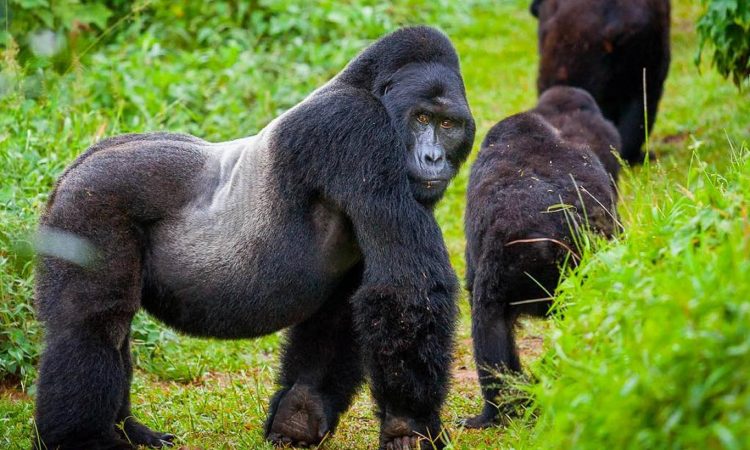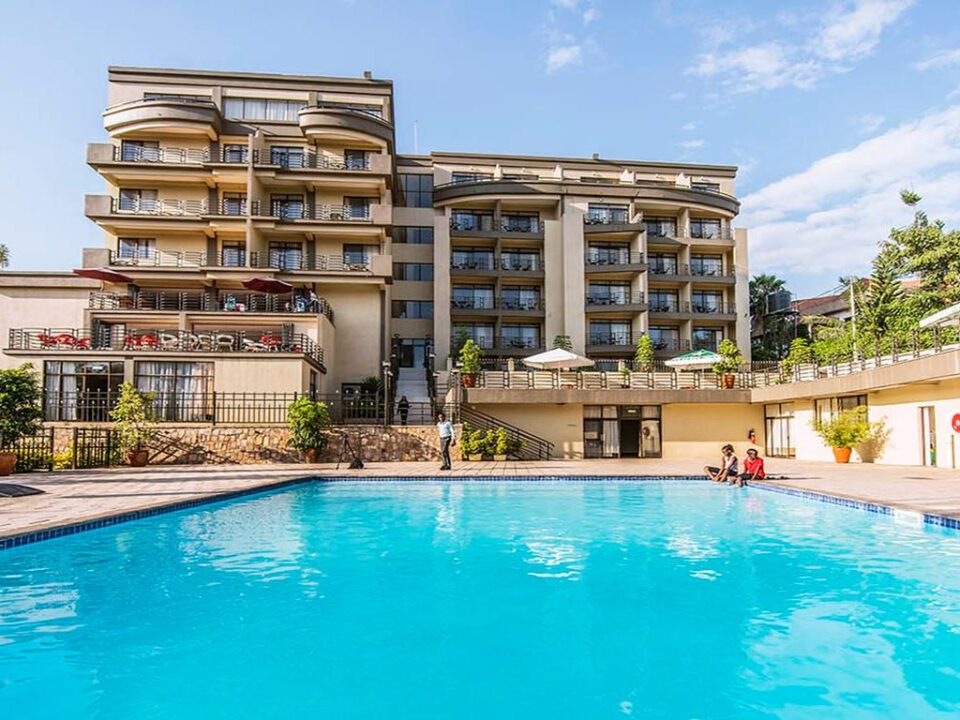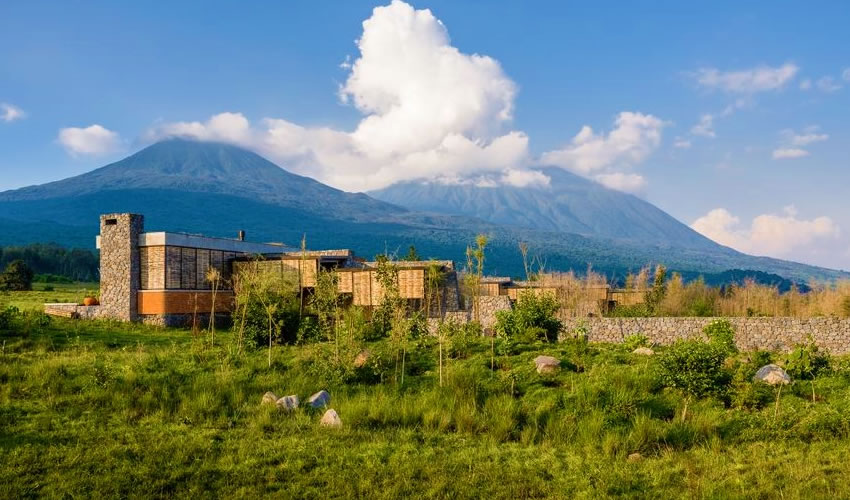- GET IN TOUCH WITH US:
- +256 753518160
- +256 777842166
- info@experiyatourcompany.com

Can I trek golden monkeys in Volcanoes National Park?
November 13, 2025
How long is a gorilla trek in Volcanoes National Park?
November 13, 2025How Much Does Gorilla Trekking Cost in Rwanda?
Understanding the True Value Behind Rwanda’s Premier Wildlife Experience
Gorilla trekking in Rwanda is one of the most extraordinary wildlife experiences available anywhere in the world. It is a rare opportunity to step inside the ancient rainforest of Volcanoes National Park and come face-to-face with the majestic mountain gorillas—an endangered species protected with exceptional dedication. For many travelers, the first and most important question is: How much does gorilla trekking cost in Rwanda?
The answer involves more than just the price of the permit. Gorilla trekking in Rwanda includes several logistical elements that shape the overall cost. Understanding these components helps travelers plan effectively and appreciate the conservation-driven pricing model that has helped Rwanda become a global leader in sustainable tourism.
This detailed blog breaks down the full cost of gorilla trekking in Rwanda, explains why the pricing is what it is, explores what the permit includes, and highlights the factors that influence the overall expense of this once-in-a-lifetime experience.
The Gorilla Trekking Permit: Rwanda’s Core Cost
The most significant cost of gorilla trekking in Rwanda is the gorilla trekking permit, which is mandatory for every trekker. As of the latest pricing update, the cost of a gorilla trekking permit in Rwanda is:
1500 USD per person for foreign non-residents.
This fee is charged per trek, meaning each time a visitor enters the forest to see the gorillas, a separate permit must be purchased. Rwanda’s permit cost is currently the highest among the three countries that offer mountain gorilla trekking—Rwanda, Uganda, and the Democratic Republic of Congo. While Uganda charges 700 USD and Congo charges lower fees, Rwanda has positioned itself as a premium gorilla trekking destination with a strong focus on conservation, safety, and high-quality visitor experiences.
What the Gorilla Permit Includes
Although the permit price may appear high at first glance, it covers essential components of the trekking experience. Every permit includes:
Entry into Volcanoes National ParkThe full cost of ranger guides and trackers
A team of expert trackers who locate the gorilla families before trekkers enter the forest
One full hour with the assigned gorilla family
Conservation fees and community contributions
Anti-poaching patrol funding
Habituation, research, and veterinary support
Safety management within the park
Government operations that protect the mountain gorillas and their habitat
The funds generated from permit sales play a crucial role in protecting mountain gorillas from extinction. About 10 percent of permit revenue is distributed to local communities, supporting schools, hospitals, roads, and alternative livelihood programs. This community-based model has transformed Rwanda’s approach to conservation and reduced human-wildlife conflict, ensuring that local people directly benefit from gorilla tourism.
Why Rwanda’s Permit Is More Expensive Than Uganda
The higher cost of Rwanda’s gorilla permit is the result of several strategic factors:
Premium tourism modelRwanda adopted a “high-value, low-impact” tourism model designed to reduce crowding in the park while increasing conservation funding.
Exceptional safety and security standardsRwanda’s political stability and low crime rate make it one of the safest destinations in Africa.
Superior accessibilityVolcanoes National Park is only 2.5 hours from Kigali, significantly reducing travel time, accommodation costs, and logistical complexity.
Luxury tourism investmentRwanda has positioned itself as a luxury primate tourism destination with world-class lodges, roads, and tourism infrastructure.
These factors collectively support the higher permit price and attract travelers seeking a premium and highly organized trekking experience.
Additional Costs Associated With Gorilla Trekking
Beyond the permit, the total cost of gorilla trekking depends on several other expenses that vary with personal preferences, travel style, accommodation choices, and itinerary length.
1. Accommodation Costs in Volcanoes National Park
Rwanda offers a wide range of accommodations for gorilla trekkers—luxury lodges, mid-range options, and budget-friendly stays. The most expensive lodges are among the finest in East Africa, attracting high-end travelers seeking exclusivity and comfort.
Luxury lodges (1000–3000 USD per night)
Mid-range lodges (200–500 USD per night)
Budget lodges and guesthouses (80–150 USD per night)
Accommodation frequently includes meals, guided activities, and cultural experiences, depending on the package.
2. Transportation Costs
Travelers must reach Volcanoes National Park from Kigali. Transportation costs depend on vehicle type and whether the traveler chooses private or shared transfer.
Private 4×4 safari vehicle with driver-guide ranges from 150 to 250 USD per day.
Shared transport may be arranged by some tour operators at lower rates.
Self-drive is possible but not recommended due to terrain and navigation challenges.
Most travelers book private transfers for safety, comfort, and convenience.
3. Guide Services and Tour Operator Fees
Booking through a tour operator is the most reliable and organized way to secure a gorilla trekking permit. Operators coordinate everything including transport, accommodation, meals, park entry, and guiding.
Tour packages that include gorilla trekking typically range:
Budget packages: 1500–2000 USD per person
Mid-range packages: 2200–3500 USD per person
Luxury packages: 4000–9000 USD per person
The difference lies in accommodation class, vehicle quality, and service level.
4. Meals and Extra Activities
Most lodges include meals, but independent travelers may spend 20–50 USD per meal depending on dining preferences. Visitors often combine gorilla trekking with additional activities such as:
Golden monkey trekking
Musanze caves exploration
Cultural village tours
Mount Bisoke hikes
Dian Fossey tomb hike
These activities may cost between 50 and 100 USD each, except golden monkey trekking, which costs 100 USD per person.
5. Gear and Preparation Costs
Gorilla trekking requires appropriate clothing and gear, such as hiking boots, gloves, waterproof jackets, and layers for cold mornings. Travelers may need to purchase or rent certain items.
Basic gear may cost 100–300 USD depending on what is needed.
The Total Estimated Cost of Gorilla Trekking in Rwanda
While costs vary based on preferences, the average traveler typically spends:
Permit: 1500 USD
Accommodation: 200–500 USD per night
Transport: 150–250 USD per day
Meals and extras: 50–200 USD per day
Additional park activities: Optional
Tour operator package: 1500–9000 USD depending on style
A standard 2–3 day gorilla trekking trip in Rwanda usually costs between 2500 USD and 6000 USD per person, depending on accommodation level and itinerary style.
Why Gorilla Trekking in Rwanda Is Worth the Investment
Despite its cost, gorilla trekking in Rwanda is consistently described as one of the most meaningful wildlife experiences in the world. Travelers return with unforgettable memories—intimate encounters with gorillas, breathtaking mountain scenery, deep cultural appreciation, and emotional connection to nature.
The experience provides:
Guaranteed gorilla sightings
World-class ranger tracking
Safe and seamless trekking environment
Community support and responsible tourism
A deeply transformative wildlife encounter
The price of the permit is more than a fee—it is an investment in conservation and a contribution to the survival of a critically endangered species.
Rwanda’s Unmatched Trekking Convenience
Another reason travelers are willing to pay more is convenience. Rwanda offers the easiest access to mountain gorillas globally. Within just a few hours of landing in Kigali, travelers can already be near Volcanoes National Park. This eliminates long drives and expensive internal flights that are often required in other destinations.
The cost of gorilla trekking in Rwanda reflects its exceptional conservation approach, premium tourism model, and world-class trekking experience. While the 1500 USD permit is the core cost, the overall investment includes transport, accommodation, tour services, and gear. Travelers who choose Rwanda often describe the experience as priceless—an emotional, intimate, and unforgettable moment with one of nature’s most incredible species.
Travelers planning to experience the magic of gorilla trekking in Rwanda are encouraged to book their journey with Experiya Tour Company, a trusted specialist dedicated to organizing seamless, professional, and unforgettable wildlife adventures across East Africa.




